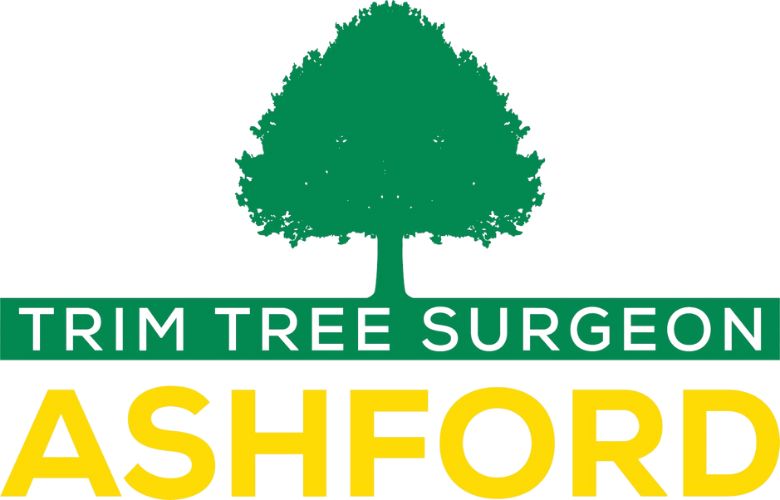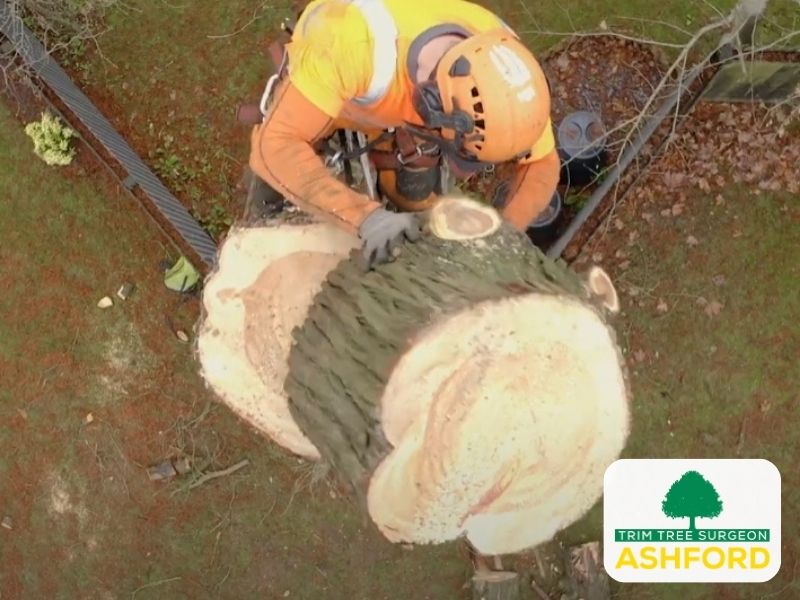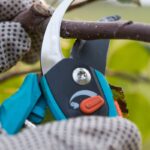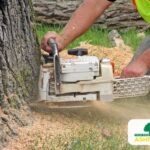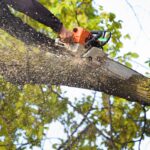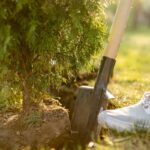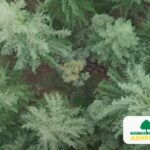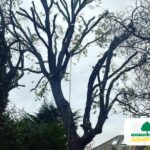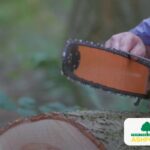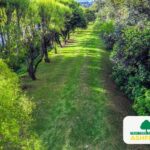When it comes to tree removal, safety should be your number one priority. It may seem straightforward but requires careful planning and execution to avoid any potential hazards.
This article will guide you through the necessary guidelines and equipment needed for tree removal in the UK.
Conducting a thorough risk assessment is crucial to identify any potential dangers or obstacles that may arise during the tree removal process.
Personal protective equipment (PPE) such as helmets, gloves and safety glasses should always be worn to protect you from falling debris and other unexpected incidents.
Choosing the right tools and equipment is also essential. From chainsaws to ladders, having reliable and well-maintained equipment is vital for a successful operation.
Proper cutting techniques should be followed to prevent accidents or damage to property. Establishing a safe work zone by cordoning off the area will help protect yourself and others from potential harm.
Seeking tree surgeon services if needed can provide additional expertise and ensure a smooth tree removal process.
By adhering to these guidelines and using appropriate equipment, you can confidently undertake tree removal tasks while prioritising your safety at all times.
Conduct a Risk Assessment
Before you begin removing trees, it’s essential to conduct a thorough risk assessment to ensure your safety and that of those around you. Assessing hazards is vital as it helps identify any potential dangers and take necessary precautions.
Start by evaluating the tree’s location and surroundings, looking for any obstacles or nearby structures that could be affected during removal. Take into account factors such as weather conditions, unstable ground, or power lines that may present risks.
Furthermore, assess the health and stability of the tree, looking for signs of decay or structural weakness. By carrying out a comprehensive risk assessment, you can plan your approach to tree removal effectively and reduce potential harm.
Once this assessment is complete, it’s time to move on to the next section about using personal protective equipment (PPE).
Use Personal Protective Equipment (PPE)
Make sure you’re fully kitted out with the right PPE to stay safe while removing trees. It’s crucial to select the right PPE to protect yourself from potential hazards.
Begin by choosing a hard hat to guard your head from falling branches or debris. You must also wear eye protection, such as safety glasses or goggles, to avoid eye injuries caused by flying wood chips or dust. Don’t forget to wear hearing protection, like earmuffs or earplugs, to lower the risk of noise-induced hearing loss from chainsaws or other loud equipment.
It’s also important to maintain your PPE correctly. Inspect your gear regularly for any signs of wear and tear, and replace any damaged items immediately. Clean and sanitize your equipment after each use to prevent contamination and prolong its lifespan.
Now that you’re aware of the importance of using the right PPE and maintaining it correctly, let’s move on to choosing the right tools and equipment for tree removal.
Choose the Right Tools and Equipment
To ensure optimal safety and efficiency during the process, it’s essential to carefully select the right tools and equipment for effectively removing trees. Safety guidelines should always be followed when choosing the correct equipment.
Firstly, a sturdy ladder or aerial lift that can safely reach higher branches is a must. Additionally, a chainsaw with a sharp blade and proper chain tension is essential for cutting through tree limbs effectively. Other tools such as pruning shears, hand saws, and pole pruners are also necessary for smaller branches.
Protective gear like gloves, helmets, goggles, and ear protection must be worn while operating these tools. By selecting the appropriate equipment according to safety guidelines, you can ensure a smooth removal process without any accidents or injuries.
Moving on to the subsequent section about ‘following proper cutting techniques’, it’s important to understand how to safely handle these tools while removing trees without causing harm or damage.
Follow Proper Cutting Techniques
Using the correct cutting techniques is essential for a smooth and accident-free tree removal process. Research has shown that improper cuts can lead to an increased risk of tree damage or injury. To guarantee safety and efficiency, it’s important to follow proper techniques when cutting down a tree.
Start by making a notch on the side of the trunk where you want the tree to fall. Then, create a horizontal cut just above the bottom of the notch to form an open face. Next, make a backcut slightly above the horizontal cut but on the other side of the trunk. This’ll release tension in the tree and cause it to fall in your desired direction.
Throughout this process, always wear personal protective equipment such as gloves, eye protection, and sturdy footwear to reduce any potential hazards. By adhering to these proper techniques and taking necessary safety precautions, you can remove trees safely without causing harm or damage.
Now let’s set up a safe work zone for further precautions.
Establish a Safe Work Zone
Creating a safe work zone is essential for the well-being of those involved in tree removal. Hazards can cause serious risks, so safety measures must be put in place to reduce accidents and injuries.
Start by cordoning off the work area with caution tape or barriers to prevent unauthorized access. Clear any obstacles that could impede movement or create tripping hazards.
Ensure all workers have the right protective equipment, such as helmets, gloves, and safety glasses. Clearly explain potential dangers and emergency procedures to everyone present.
Establish escape routes and a designated meeting point in case of an emergency. If needed, seek professional help to manage complex tree removal tasks safely and efficiently.
Seek Professional Assistance if Needed
If you’re unsure about safely and efficiently removing complex trees, it’s always wise to seek professional help. ‘Better safe than sorry!’
Sometimes, hiring professionals is essential to identify potential risks of tree removal. Arborists have the knowledge and experience to assess the risks and take necessary precautions. They’re trained to identify power lines, nearby structures, or unstable trees that could be a danger during the removal process.
By hiring professionals, you can avoid accidents, costly damages, and ensure the job is done correctly and efficiently. Therefore, if you doubt your ability to handle a complex tree removal task, don’t hesitate to call in the experts.
Frequently Asked Questions
How much does it cost to hire a professional tree removal service?
The cost of hiring a professional tree removal service in the UK varies depending on a number of factors. These factors include the size and location of the tree, accessibility, complexity of the job, and any extra services needed (e.g. stump removal or debris disposal).
It’s advisable to get multiple quotes from reliable companies to make sure you get a fair price. Remember that safety, expertise, and the right equipment are essential when it comes to tree removal.
What are the most common risks associated with tree removal?
When it comes to tree removal, safety should be your priority. Protective gear such as a hard hat, safety glasses, ear defenders, and sturdy gloves should be worn at all times to protect against falling debris and sharp branches.
Common risks include injury from falling branches, damage to property, and disruption to power or water lines.
Taking the necessary precautions can help to minimize the risks associated with tree removal. Stay safe!
Can I remove a small tree by myself without professional assistance?
Yes, you can remove a small tree without professional assistance. However, you should ensure your safety and follow correct procedures. DIY tree removal requires equipment such as chainsaws, ropes, and protective gear like gloves and goggles. Assess the tree’s condition and the surrounding area for potential hazards before starting. Familiarize yourself with proper cutting techniques to avoid accidents. Don’t forget to dispose of the tree properly after removal to avoid any further issues.
Are there any legal regulations or permits required for tree removal in the UK?
In the UK, legal regulations and permits are required for tree removal. Before starting a tree removal project, familiarise yourself with the relevant regulations.
These may vary according to your location and the size of the tree, so it’s best to consult your local council or an arborist. They can help guide you through the process and ensure you comply with all necessary permits and regulations.
What should I do if I encounter a hazardous situation while removing a tree?
Encountering a hazardous situation while removing a tree can be alarming. Don’t panic though, there are steps you can take to handle emergencies and ensure your safety.
Assess the situation and prioritize your well-being. If immediate danger is present, step away carefully. Always wear protective gear and have emergency equipment nearby.
Use correct techniques for tree removal to reduce risks. By following safety precautions and staying alert, you can effectively manage any unexpected situations that arise.
Thank you for reading our post, please reach out to us if you enjoyed the article or if you want to explore some of our service please see below:
